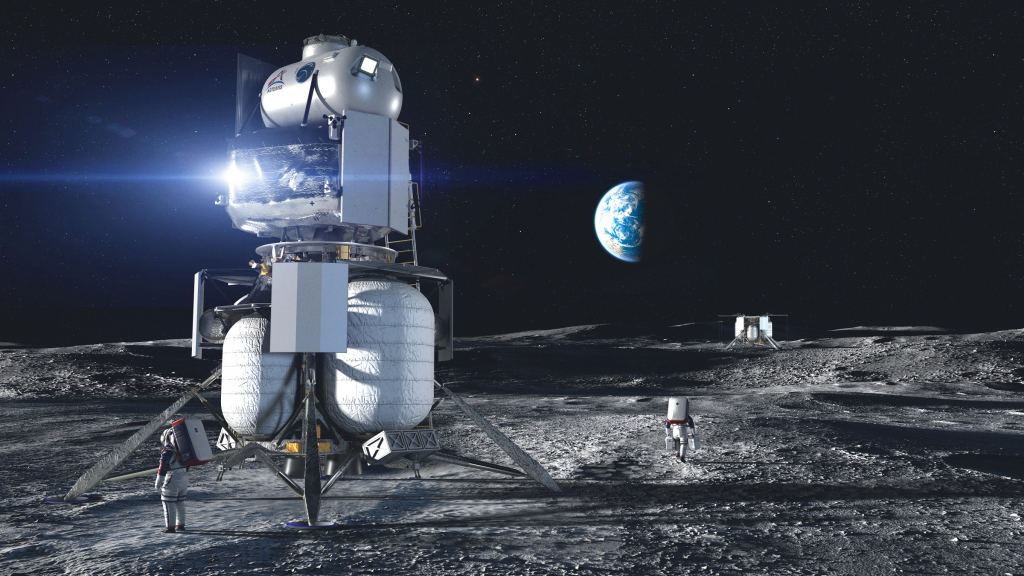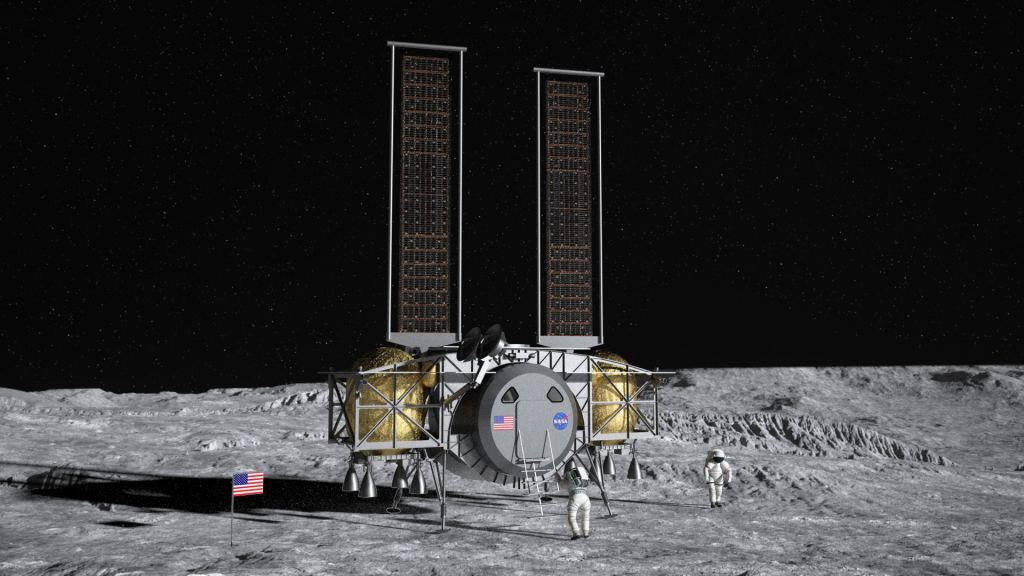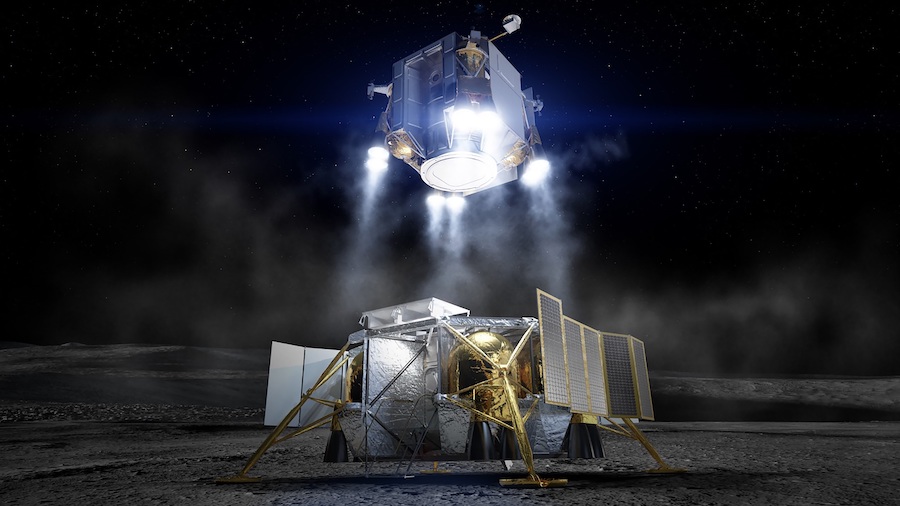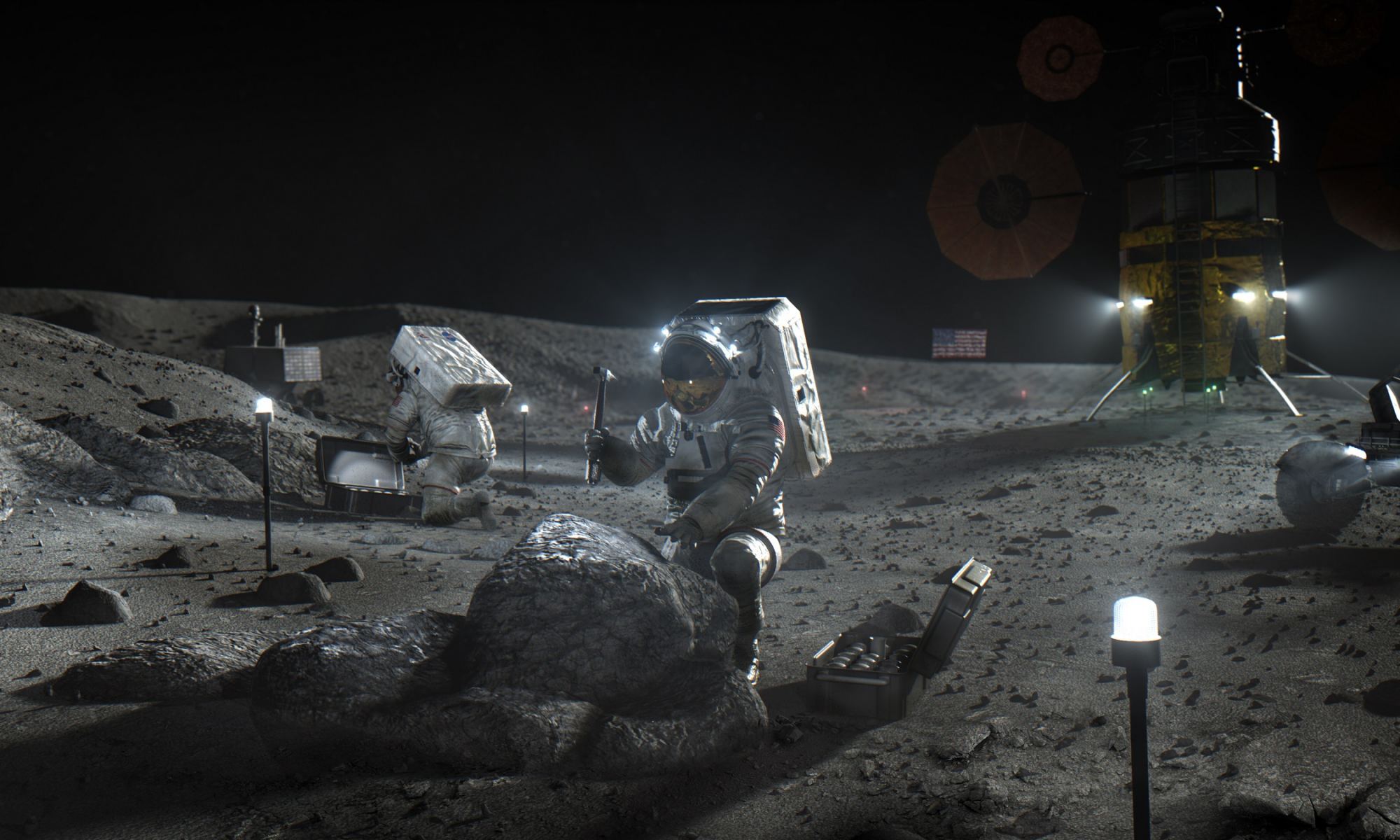In less than four years, NASA plans to send astronauts back to the Moon for the first time since the Apollo era (Project Artemis). But this time, NASA plans to build the infrastructure needed to ensure a “sustainable program” of lunar exploration. In short, we’re going back to the Moon and this time, we plan to stay! To help them get there, the agency has partnered with commercial aerospace companies to provide logistical support.
In addition, NASA recently named three companies to develop vehicles for the Artemis missions that will be capable of landing astronauts on the lunar surface. They include the commercial space powerhouses SpaceX and Blue Origin, as well as the Alabama-based Dynetics, all of whom are tasked with developing Human Landing Systems (HLS) that can be deployed from their respective heavy launch systems (or another commercial provider).
These contracts were awarded as part of the Next Space Technologies for Exploration Partnerships (NextSTEP-2) and have a combined fix-priced value of $967 million for the 10-month base period. During this period, NASA teams will be embedded with the three companies to contribute their technical expertise and spaceflight experience and to help streamline the review process.

The human landers are the final component in the transportation chain designed for the sustainable exploration of the Moon – which includes the Space Launch System (SLS), the Orion spacecraft, and the Lunar Gateway. As NASA Administrator Jim Bridenstine said in a recent NASA press release:
“With these contract awards, America is moving forward with the final step needed to land astronauts on the Moon by 2024, including the incredible moment when we will see the first woman set foot on the lunar surface. This is the first time since the Apollo era that NASA has direct funding for a human landing system, and now we have companies on contract to do the work for the Artemis program.”
Per their contractual responsibilities, SpaceX will develop a modified version of the Starship to accommodate lunar landings. This fully-integrated vehicle will launch atop the company’s Super Heavy booster and will include a spacious cabin capable of housing a full crew of astronauts and two airlocks to accommodate moonwalks.
Blue Origin, owned by Jeff Bezos (CEO of Amazon) is developing a three-stage lunar lander known as the Integrated Lander Vehicle (ILV). This will consist of three elements – the descent, transfer, and ascent elements – which will be designed by Blue Origin, Northrop Grumman, and Lockheed Martin, respectively.

This vehicle will be launched by either a United Launch Alliance (ULA) Vulcan Centaur launch system or the company’s own New Glenn Rocket – a two-stage launch vehicle currently under development that relies on a reusable first stage and an expendable second stage. The ILV will be capable of docking with either the Orion spacecraft or the Gateway and will have the option of being combined to launch on the SLS.
Then there is aerospace developer Dynetics – a subsidiary of the defense, aviation, IT, and biomedical company Leidos – which is headquartered in Huntsville, Alabama. They are developing the Dynetics Human Landing System (DHLS), a vehicle that will provide both descent and ascent capabilities to and from the Orion spacecraft or the Gateway.
This vehicle will be capable of launching on a number of different rockets (including the ULA Vulcan) and will be equipped with multiple modular propellant vehicles to fuel the engines at different points in the mission. It also features a cabin that sits low to the surface, which can accommodate quick access to the surface and the transportation of tools and samples.
Said Douglas Loverro, NASA’s associate administrator for Human Explorations and Operations Mission Directorate:
“We are on our way. With these awards we begin an exciting partnership with the best of industry to accomplish the nation’s goals. We have much work ahead, especially over these next critical 10 months. I have high confidence that working with these teammates, we will succeed.”

The base period will continue until February 2021; during which time, the three contractors will have the opportunity to refine their lander concepts. At the same time, NASA will evaluate which company is prepared to perform initial demonstration missions once their concepts are fully-realized. After that, NASA will consider which company to contract with to provide commercial space transportation services.
As Lisa Watson-Morgan, the HLS program manager at NASA’s Marshall Space Flight Center, expressed:
“I am confident in NASA’s partnership with these companies to help achieve the Artemis mission and develop the human landing system returning us to the Moon. We have a history of proven lunar technical expertise and capabilities at Marshall and across NASA that will pave the way for our efforts to quickly and safely land humans on the Moon in 2024.”
A notable absence from this list is defense and aerospace contractor Boeing, which is already contracted with NASA for the development of the core stage of the SLS and the CST-100 Starliner. In 2019, Boeing was among the eleven companies that submitted an HLS proposal in response to NASA’s solicitation through NextSTEP.

Their lander concept called for lander with both a descent and ascent stage that could be launched on an SLS. The descent stage would be able to deorbit the lander, thus eliminating the need for a third transfer stage. Boeing’s design also ensured that their lander would be capable of docking with the Lunar Gateway or the Orion spacecraft to allow for a simpler mission profile.
This would also come in handy and in the event that the Gateway was deemed unnecessary to the fulfillment of Artemis’ goals in time for 2024 (which NASA recently declared). It would also leverage technologies that were developed and tested for the Starliner, including the life support and avionics systems. Why Boeing was passed over may have to do with delays in the development of the SLS.
Due to the high mass of the lander, it would require the SLS Block 1B, a heavy configuration capable of launching crewed spacecraft. At present, this configuration is not expected to be operational until 2025 at the earliest. It’s also possible that between their commitments to developing the SLS and the CST-100 Starliner – as part of NASA’s Commercial Crew Program.
In any case, we’re likely to see some very interesting developments as we get closer to NASA’s long-awaited return to the Moon in 2024. Beyond that, there’s plenty of more excitement expected! Be sure to check out this NASA video about the latest step in NASA’s program for renewed lunar exploration:
Further Reading: NASA

